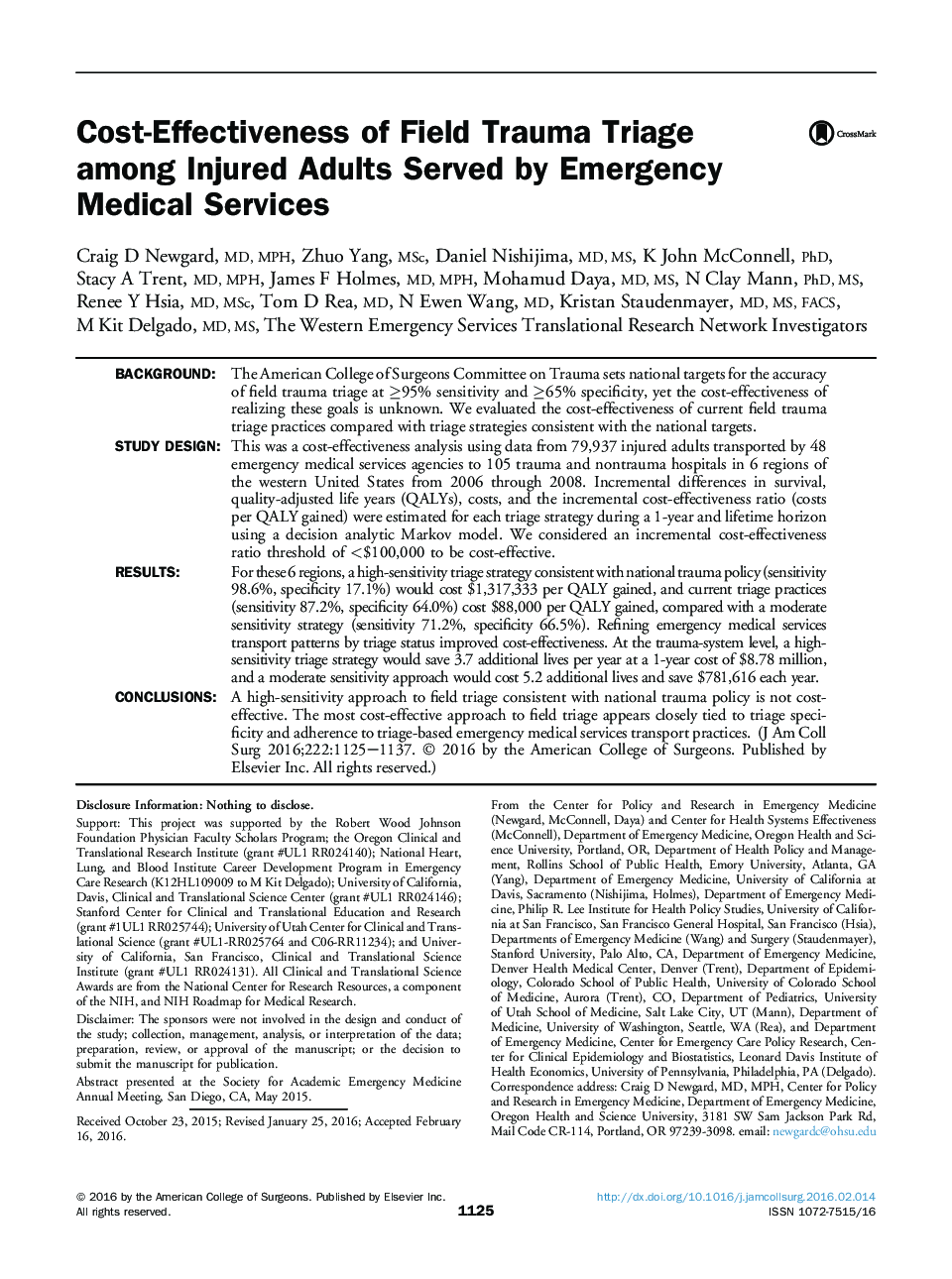| Article ID | Journal | Published Year | Pages | File Type |
|---|---|---|---|---|
| 4290589 | Journal of the American College of Surgeons | 2016 | 13 Pages |
BackgroundThe American College of Surgeons Committee on Trauma sets national targets for the accuracy of field trauma triage at ≥95% sensitivity and ≥65% specificity, yet the cost-effectiveness of realizing these goals is unknown. We evaluated the cost-effectiveness of current field trauma triage practices compared with triage strategies consistent with the national targets.Study DesignThis was a cost-effectiveness analysis using data from 79,937 injured adults transported by 48 emergency medical services agencies to 105 trauma and nontrauma hospitals in 6 regions of the western United States from 2006 through 2008. Incremental differences in survival, quality-adjusted life years (QALYs), costs, and the incremental cost-effectiveness ratio (costs per QALY gained) were estimated for each triage strategy during a 1-year and lifetime horizon using a decision analytic Markov model. We considered an incremental cost-effectiveness ratio threshold of <$100,000 to be cost-effective.ResultsFor these 6 regions, a high-sensitivity triage strategy consistent with national trauma policy (sensitivity 98.6%, specificity 17.1%) would cost $1,317,333 per QALY gained, and current triage practices (sensitivity 87.2%, specificity 64.0%) cost $88,000 per QALY gained, compared with a moderate sensitivity strategy (sensitivity 71.2%, specificity 66.5%). Refining emergency medical services transport patterns by triage status improved cost-effectiveness. At the trauma-system level, a high-sensitivity triage strategy would save 3.7 additional lives per year at a 1-year cost of $8.78 million, and a moderate sensitivity approach would cost 5.2 additional lives and save $781,616 each year.ConclusionsA high-sensitivity approach to field triage consistent with national trauma policy is not cost-effective. The most cost-effective approach to field triage appears closely tied to triage specificity and adherence to triage-based emergency medical services transport practices.
